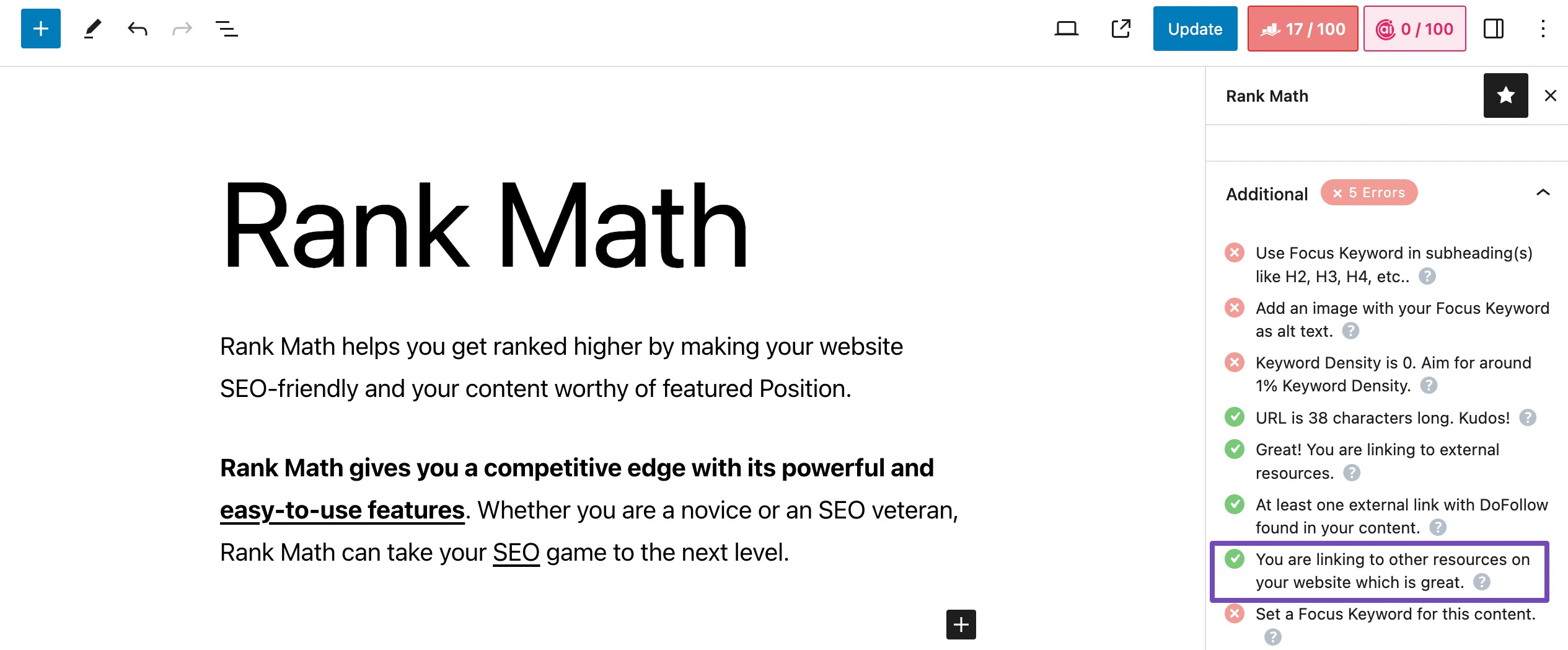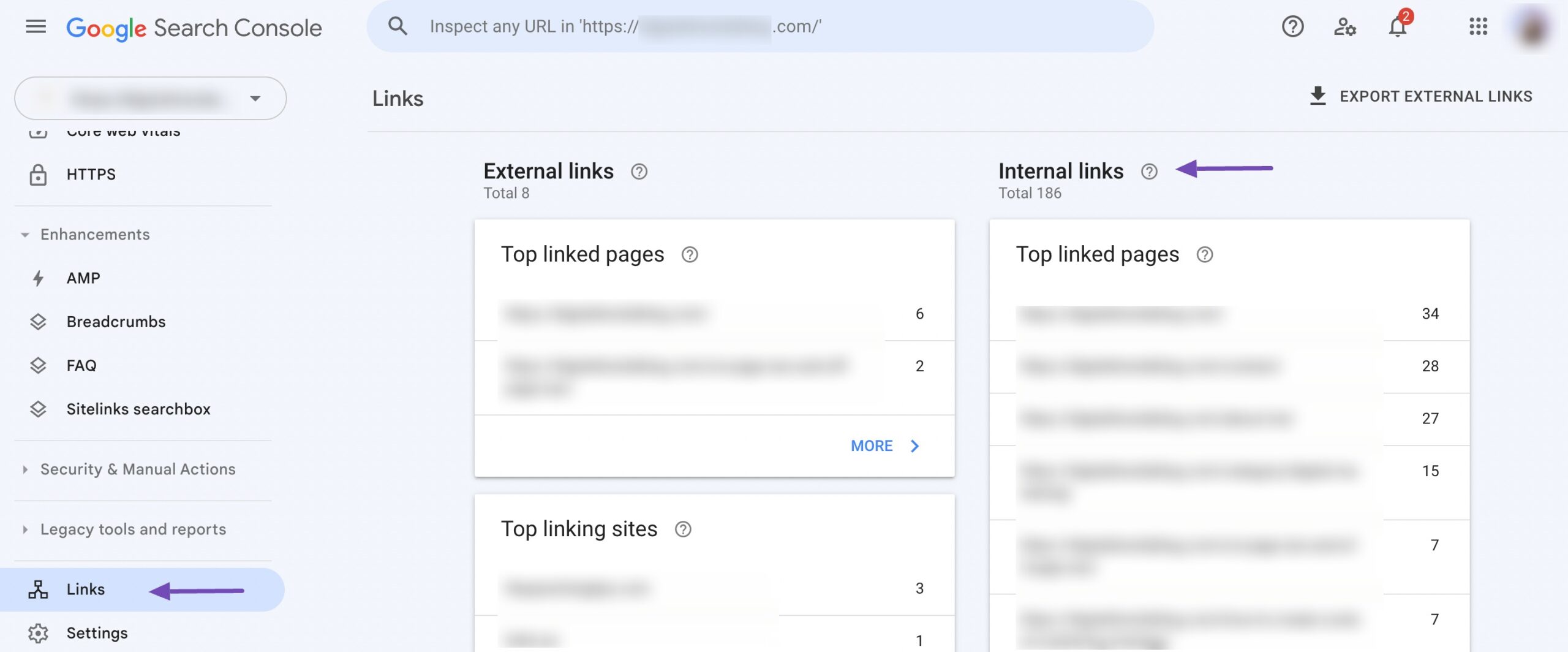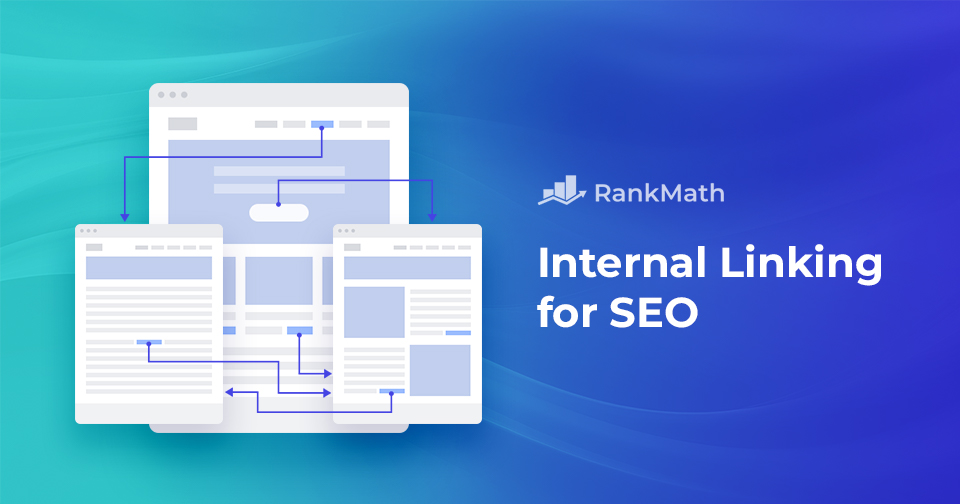Internal linking is a fundamental aspect of website architecture and SEO strategy, which includes creating hyperlinks that connect different pages within the same website.
These links serve as navigational pathways, allowing you and search engine crawlers to explore and index various sections of a website. Internal linking establishes a web of interconnected content, contributing to a site’s overall coherence and structure.
In this post, we’ll discuss everything you need to know about internal linking.
So, without any further ado, let’s get started.
Table Of Contents
1 Understanding Internal Linking
Let us now discuss internal links in detail.
1.1 What Are Internal Links?
As we’ve mentioned, internal links are essentially hyperlinks that guide your audience from one page to another within your website.
While their primary function is to facilitate smooth navigation, it’s important to recognize that they significantly enhance your website’s SEO performance.
Here’s an example of an internal link:

These links serve as navigational pathways, allowing your audience and search engine crawlers to explore and index various sections of a website.
1.2 Importance of Internal Linking for SEO
The significance of internal linking for SEO cannot be overstated.

Beyond its role in facilitating navigation, internal linking is a strategic tool for optimizing a website’s performance in search engine results.
By establishing contextual relationships between pages, internal linking enhances search engines’ overall understanding of a site’s content, leading to improved indexing and ranking. Furthermore, it distributes “link juice” or authority throughout the site, influencing the importance of individual pages.
1.3 Difference Between Internal and External Links
The difference between internal and external links lies in their destination.
Internal links point to pages within the same domain, facilitating navigation and creating a network of interconnected content. External links, on the other hand, direct your audience to pages on different domains.
While both types of links are essential, internal links are particularly influential in shaping the audiences’ journey within a specific website and establishing topical relevance.
1.4 How Search Engines View Internal Links
Search engines view internal links as important indicators of a website’s structure and content relationships. When search engine crawlers encounter internal links, they follow these pathways to index and understand the interconnected nature of a site’s pages.
Internal links contribute to the search engine’s understanding of page hierarchy, importance, and topical relevance.
The strategic use of internal linking can enhance the visibility of specific pages, distribute authority throughout the site, and improve the overall ranking potential of a website.
2 Benefits of Internal Linking for SEO
Improved User Experience
One of the primary benefits of internal linking lies in its capacity to enhance the overall user experience. By strategically placing links between related pages, your website can guide the audience to discover additional, relevant content.
Enhanced Crawling and Indexing
Internal linking plays a pivotal role in facilitating search engine crawlers’ ability to discover, crawl, and index content on a website. When search engine bots encounter internal links, they follow these pathways to navigate the site’s various pages. This process ensures that all relevant content is identified and included in search engine indexes.
Page Authority and Link Juice Distribution
Internal linking serves to distribute “link juice” or authority throughout a website. This distribution of authority contributes to the overall domain strength, positively impacting the ranking potential of individual pages and the site as a whole.
Reduction of Bounce Rates
Well-crafted internal links can tempt your audience to explore additional pages, reducing bounce rates. By guiding the audience to related and compelling content, internal linking extends the duration of sessions and signals to search engines that the site offers valuable, interconnected information.
3 Strategies for Internal Linking
Now that you have a clear idea of internal links let us discuss the strategies for internal linking.
3.1 Identify Pillar Content for Your Website
Pillar content is the foundational material covering broad topics within your niche or industry. These comprehensive pieces act as the cornerstone around other related content-building topic clusters.
These authoritative pieces showcase your expertise to your audience and act as focal points for internal linking, creating a network of interconnected information.
Rank Math’s Pillar Content feature helps place the pillar/cornerstone articles at the top of the list of link suggestions.

3.2 Anchor Text Optimization
Anchor text optimization involves using descriptive and relevant keywords as the clickable text for your internal links. By incorporating keywords that accurately represent the linked page’s content, you can provide your audience and search engines with clear context.

While optimizing anchor text is important, avoiding over-optimization is equally important. Strive for a natural and varied approach, ensuring the anchor text fits correctly within the surrounding content.
3.3 Link Placement
Linking to important pages within your website is a fundamental aspect of internal linking that significantly impacts user engagement and search engine optimization.
By strategically placing links to important and relevant pages, you guide your audience and search engines to recognize the significance of specific content on your site.
For instance, if you run an e-commerce site, strategically placing internal links from your homepage to best-selling products or exclusive deals directs your audience’s attention to your site.
The objective is to create a hierarchical structure where the important pages receive more internal links. These links can exist in various elements of your website, such as navigation menus, contextual links within blog posts, or even call-to-action buttons.
3.4 Contextual Relevance
Creating internal links to contextually relevant content on your website offers your audience additional information about the topic you’re discussing.
For example, if you have a product page for digital cameras, internal links to pages about photography tips or camera accessories can enhance the overall experience.
This approach also signals to search engines that your content is comprehensive and authoritative within a specific niche.
Remember, though, don’t force internal links if there isn’t a genuine and relevant connection between two pages; trying to create one can have a negative impact on your SEO.
Rank Math performs real-time checks on your post and notifies you if there are no internal links present. This allows you to easily add an internal link, enhancing the on-page SEO of your post or page.

3.5 Strategic Use of nofollow/dofollow Attribute
The nofollow attribute, when applied to a link, signals to search engines that they should not pass authority or “link juice” to the linked page.
For example, if you allow your audience to comment on your blog and they put links in their comments, you might want to use nofollow to avoid giving your website’s thumbs up to every link in the comments. This helps keep your site clean and trustworthy.
Conversely, dofollow links allow the flow of authority. So, if you have a super helpful page, like a guide on your website, you might use dofollow links from other pages to that guide. This passes on some ‘SEO juice,’ telling search engines that the guide is essential. It’s like giving a green light to the search engines to follow that link and give credit to the linked page.
But it’s necessary to balance things out. Using too many nofollow links might make your site look like it’s not sharing the love, while too many dofollow links might dilute the impact.
Refer to our dedicated tutorial on link building and learn the easy link-building methods for your website.
3.6 Link to Old Posts From New Posts and Vice Versa
Linking to old posts from new ones and vice versa is a smart internal linking strategy that benefits your audience and your website’s SEO.
When you link to old posts from new content, you’re providing additional information to your audience. This can help them gain a more comprehensive understanding of the topic you’re discussing. It also encourages the audience to explore your site further, increasing engagement.
For instance, if you’re writing a new post about advanced SEO techniques, you can link back to a previous post that covers the basics of SEO. This way, your audience who are new to the subject can easily access foundational information, creating a more user-friendly experience.
Conversely, linking from old posts to new ones keeps your content relevant and up-to-date. If you’ve published recent content that expands on or updates information from an older post, linking to it ensures your audience has access to the latest insights.
If you’re unsure where to link to on your website, you can use Rank Math’s Link Suggestions feature to view the internal linking suggestions.

3.7 Monitor Internal Links
One of the key features of Google Search Console is the ability to monitor internal links.
It provides a detailed breakdown of the internal links within your website, allowing you to see which pages are frequently linked to and how they contribute to the overall structure.

4 Frequently Asked Questions
When should I use nofollow attributes in internal links?
Nofollow attributes should be used when linking to pages where you don’t want to pass authority, such as user-generated content, login pages, or sponsored links.
What is the impact of overusing nofollow attributes?
Overusing nofollow attributes may disrupt the natural flow of authority within your site, potentially reducing its impact.
How can I reduce bounce rates through internal linking?
Internal linking can reduce bounce rates by guiding your audience to explore additional pages and providing them with relevant, engaging content.
What is the role of internal linking in on-page SEO?
Internal linking in on-page SEO improves content visibility, enhances keyword relevance, and contributes to a well-structured website.
What are the common mistakes to avoid in internal linking?
Common mistakes include excessive internal linking, ignoring broken links, lack of anchor text variation, and overlooking mobile responsiveness in link placement.
How can I find internal linking opportunities within my content?
Use tools like Google Search Console to identify internal linking opportunities, analyze user behavior, and strategically place links where they add the most value.
5 Wrapping It Up
Mastering the art of internal linking is not merely about connecting pages within a website; it is a strategic approach that weaves together user experience and SEO optimization.
Whether you’re optimizing anchor text, strategically linking to pillar content, or fine-tuning your approach with data from tools like Google Search Console, the power of internal linking lies in its ability to bridge the gap between user engagement and search engine recognition.
By investing a small amount of time and thoughtful planning, your internal links can play an important role in increasing the visibility of more pages within Google’s index and securing improved ranking positions.
If you like this post, let us know by Tweeting @rankmathseo.
